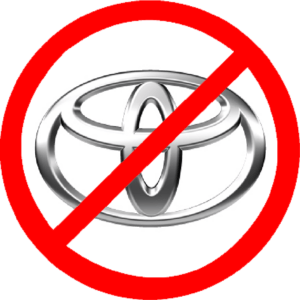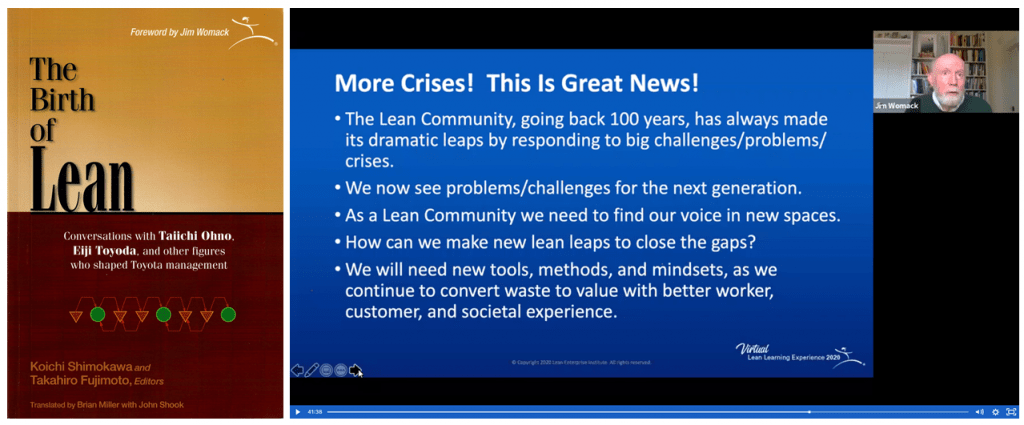
I know I am. But that is because we have been hearing the same old things about Toyota — their production system, obeya, coaching, gemba walks, A3 reports, value steam maps, LPPD, and so on. All the stuff that is easy to package and sell by various parties. You don’t hear much about Just-in-Time, except when supply chains falter (due to incorrect understanding and non-practice of JIT). You also don’t hear much about kanban, hoshin kanri, or 3P. And you know who is really tired of hearing about Toyota? Executives. While many may like to see some new tools incorporated into their business for lower-level workers to use, they otherwise have no interest in the tools or in Toyota.
And so as we reflect back over the nearly five decades since the world became aware of Toyota’s production system, it is now easy to see what has been missed and what we would do well to hear more about. Here are four things I am not tired of hearing about when it comes to Toyota: their mindset, unique way of thinking, business philosophy, and kaizen. I still want to learn more about these four things because they are the foundation that led to everything else — every innovative idea, method, every tool, and every success large and small.
This is not the usual locus of learning, unfortunately. As a result, the things people need to know most about are the things that people know least about. The Toyota mindset, their unique way of thinking, the business philosophy, and kaizen. None are learned by applying what is widely known as “Lean” tools — TPS tools and methods, actually. But this expropriation of Toyota’s work, led by Lean movement co-founders Jim Womack and Dan Jones, does not end there. They have illegitimately expanded the meaning of the word “Lean” from a generic term for TPS (circa 1988) to an all-encompassing term for any form of improvement developed by any innovator. Click here to view the Lean Enterprise Institute’s ridiculous “Breakthrough Moments in Lean” timeline that begins in the 1500s (originally published by LEI in 2008).

The wildly inappropriately titled book, The Birth of Lean (2009) actually describes the birth of Toyota’s production system starting in the 1940s. The “Birth of Lean” occurred at the Massachusetts Institute of Technology in the 1980s and was described in the book The Machine That Changed the World. The image on the right is from the Lean Enterprise Institute’s recent Virtual Lean Learning Experience 2020 (VLX) conference. The first bullet point “The Lean community, going back 100 years, has always…” improperly characterizes all forms of progressive management as “Lean.” In particular, they cancel early 20th century Scientific Management and the thoughtful and dedicated work of world-famous pioneers Frederick Winslow Taylor, Morris Cooke, Henry Gantt, Carl Barth, Frank Gilbreth, Dr. Lillian Gilbreth, and others (thoroughly misunderstood by Womack and Jones), whose work Toyota people built upon and which was instrumental in helping them create TPS. Real researchers would NEVER do such a terrible and unethical thing as to eradicate important prior work and the influential movement that sprang from it (elements of Scientific Management made it into U.S. federal government policy whereas Lean has not). But businessmen would, and never with second thoughts.
These examples of brazen and disgraceful appropriation are highly misleading and foment perpetual and unnecessary confusion. But, failing the ability to appropriate, the next best thing is to ignore that which one cannot easily understand and package to sell as one’s own. That may be why kaizen never became an integral part of Lean thinking and practice. Instead, “Lean” tools took center stage and remain the focus of most people’s attention. In my view, kaizen was never understood by the co-founders of the Lean movement. They did not recognize it as the method by which TPS was created and by which it evolved, nor did they recognize kaizen’s importance in developing a unique way of thinking and how kaizen develops human creativity and innovative potential. The Lean understanding of kaizen is truly lean — meaning, deficient.
The organization and people responsible for bringing Toyota’s kaizen method to the world outside of Japan is Shingijutsu. The company, was co-founded in 1987 by Yoshiki Iwata, Chihiro Nakao, and Akira Takenaka at the behest of Taiichi Ohno. Mr. Nakao has spent the last 33 years crossing the globe teaching kaizen, which is analogous to teaching the basic reading, writing, and arithmetic that every human being needs to know to succeed in life. Kaizen is what you need to know to succeed and to survive in business. As Nakao-san says, “master the basics,” and that means kaizen. Only then can one move on to other things.
Shingijutsu was the original source from which almost all other consultants learned about kaizen. Some learned their lessons well and went on to be highly capable kaizen consultants. Many others did not. In the late 1980s, Jim Womack (and I believe Dan Jones as well) shadowed Chihiro Nakao facilitating kaizen. Everybody I know who spends time with Nakao-san is blown away by what they see, hear, and learn — from an hour with him, let alone a week. Apparently, Dr. Womack was not impressed by the knowledge and skills of one of Taiichi Ohno’s carefully hand-picked successors. That blows me away. But I suppose a lot gets lost in translation from Japanese to English, and not just words.
Few people understand Nakao-san’s tough-love message. While his scoldings are often hated at the time, they are much appreciated by most people later on because it helped break their preconceptions. Nakao-san’s gruff demeanor reflects his great concern for the survival of the business and its employees, suppliers, customers, investors, and communities — far more concern than what company managers exhibit. Shingijutsu’s founders grew up in the rubble of World War II, so their client’s survival is extremely important to them. To take money from a client in exchange for services means Nakao-san has a sacred obligation do everything he can to help the client overcome its chronic management complacency. He has been consistent for decades in this regard. It is remarkable dedication to a core concept — survival, by recognizing the reality of the bad situation (waste, unevenness, and unreasonableness) and quickly taking action to improve. I have always understood and thus accepted their tough love. I wish more people did.
Nakao-san has softened his approach a bit over the years, but, when necessary, he will scold the people who insist on clinging to outdated preconceptions that inhibit improvement. If you follow his guidance and don’t make excuses, then you will not get scolded. Remember, he takes the survival of his client company, and the employees he teaches kaizen, seriously — likely more so than anyone in the company including the founder or CEO. You should be so lucky to have someone like that on your side.
When you ask Nakao-san about Lean, he says “I don’t know what that is.” From his perspective, TPS and Lean are nowhere similar. He does not view Lean as something that helps a company survive, and so it holds no interest for him. Lean is not something that produces the needed business and human results for survival. Some of the most fun I have had is when I engage executives in reading Kaizen Forever: The Teachings of Chihiro Nakao, a small book that achieved the big goal of tying everything together: business, customers, employees, suppliers, investors, money, time, space, equipment, and so on. I explain the meaning behind Mr. Nakao’s words, and the executives who are serious about improvement light up with energy and enthusiasm to put the learnings into practice.
When executives understand the meaning behind kaizen, they suddenly see what they could not see before with “Lean” tools. For the most part, Lean left kaizen behind, robbing leaders and workers of the thing that they needed to know most about. As a Lean practitioner, what lesson do you learn from this?
